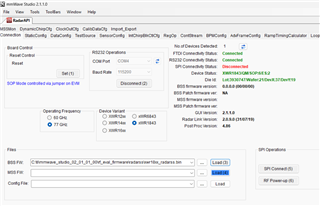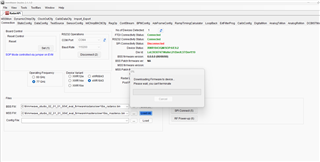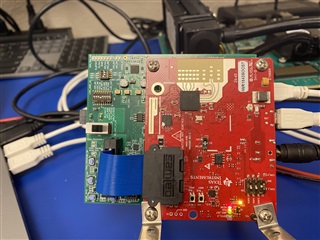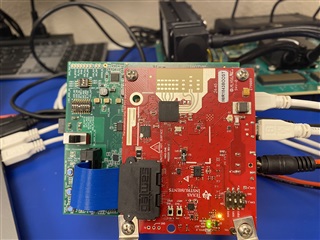Other Parts Discussed in Thread: UNIFLASH, IWR1843
Tool/software:
I am attempting to get an IWR1843BOOST with an ADC1000 up and running with mmWave Studio 2.1.1.0. I have successfully loaded the demo BSS firmware as shown in the first screenshot. However, when attempting to load the MSS firmware the system appears to lockup, as shown in the second screenshot. One oddity that I noticed is that the BSS firmware is shown as 0.0.0.0 with a date of 00/00/00. The BSS file loads reasonably quick. The MSS stays stuck on 0% loaded for more than five minutes. I have tried this twice now with the same results. Thoughts on how to troubleshoot this?





